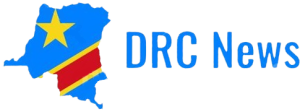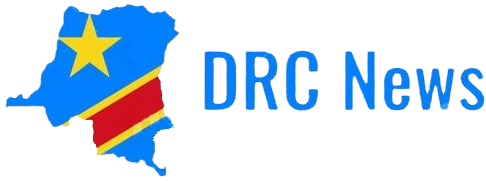Corruption, bad contracts, judicial imbroglios…Gécamines is trying to break with its past. Although President Tshisekedi and the new general management are striving to turn the public company around, many obstacles remain. The era of Albert Yuma, appointed by former president Joseph Kabila and who remained at the head of Gécamines for more than a decade, seems long gone. DRC President Félix Tshisekedi has led a vast clean-up operation, which began at the end of 2021 with a management makeover. But this new team inherited a heavy liability. In an audit report on the management of Gécamines dating from May 2022, the Inspection générale des finances (IGF) reported that more than $580m was missing, suspecting a “misappropriation of public funds”. Faced with these astronomical sums, the IGF recommended the “renewal of the Gécamines’ representatives (…) giving priority to competence, expertise and civic-mindedness”. The suspicions of corruption, which had been denounced for years by NGOs and members of Congolese civil society, were corroborated by this report. So it was impossible for the public company to go ahead with business as usual.
Nearly $1.5bn in losses
The same report indicated that the contracts between Gécamines and foreign companies had benefited the state very little. From 2012 to 2020, its various partners achieved an estimated global turnover of $35bn, against only $564m in royalties. Dan Gertler, a businessman close to former President Kabila, is still on the radar of the US Treasury, which accuses him of having used this close friendship to broker the sale of mining assets and undervalue them. The Africa Progress Panel reported a loss of state revenue amounting to approximately $1.36bn from five deals between 2010 and 2012. This imbalance was of particular benefit to the Swiss giant Glencore as well as Metalkol – an entity linked to Dan Gertler that was supposed to exploit the lucrative Kolwezi deposit and which had ousted the Canadian company First Quantum from the site in 2010. The businessman signed an amicable agreement with the Congolese government in February 2022. This should enable the country to recover the mining and oil assets that had been allocated to it, the value of which is now estimated at $2bn. It’s a clear attempt to wipe the slate clean. In addition to cleaning up the sector, the renegotiation of existing contracts is another important area that Gécamines hopes to straighten up. For example, the Chinese company CMOC, which operates one of the largest copper and cobalt mines in the world, has seen its exports blocked by its minority partner (20%). Gécamines suspects that CMOC did not inform it of the real quantity of reserves on the site. The Chinese group denies this. In August 2021, a commission to assess the existence of a loss and to quantify it, if necessary, was set up by President Tshisekedi. In February 2022 a temporary administrator was appointed by a court in Lubumbashi. However, as of last December, CMOC was still threatening legal action. The framework agreement signed between the Chinese and Congolese governments in 2008 is also being targeted. Moreover, Tshisekedi spoke on the subject at the last Davos Forum in January. The $6.2bn contract provided access to huge reserves of copper and cobalt in exchange for the construction of various infrastructure projects in DRC. “The Chinese made a lot of money (…) with this contract,” the head of state said in an interview with Bloomberg. ”Now, we simply need to rebalance things so that it becomes a win-win,” he said, pointing out that the “very badly drafted” contract had had “no positive impact”. As a result of this agreement, Sino-Congolaise des Mines (Sicomines), a partnership between several Chinese companies and Gécamines (32%), is also in the IGF’s sights. But the renegotiation of existing contracts, including legal proceedings, is taking time. Once again, more than a year has passed since the discussions began.
Serial restarts?
Beyond the tough renegotiations and the fight against corruption, Gécamines faces considerable challenges. Relaunching production, which will still be very low in 2022 – only 4,562 tn of copper according to figures from the Central Bank of Congo, compared to 476,000 tn in 1986 – and modernising an industrial infrastructure that is in ruins… The IGF report indicated that only $57m had been invested by Gécamines in the production apparatus during the audit period, out of nearly $2bn in partnership revenues. On another front, Gécamines created the Entreprise Générale du Cobalt (EGC) in late 2019 to respond to public demands for social and environmental responsibility (SER). This subsidiary, which was officially launched in March 2021, is intended to provide a proper framework for the activities of artisanal miners and to exercise a purchasing monopoly on cobalt. This cobalt has been singled out for the undignified and even deadly conditions in which it is extracted and sold at a low price to foreign companies. Boss Mining, a joint venture between Eurasian Resources Group (ERG) and Gécamines, restarted operations in late November 2022. The site is expected to produce an average of 1,800 tn of copper and 300 tn of cobalt per month by March 2023, the joint venture announced, and create around 750 jobs. The terms of the agreement had been renegotiated at the end of 2018 following various disputes, increasing the state-owned company’s share from 30% to 49%. Another reboot – this time a zinc deposit – operated by Kipushi Corporation. This joint venture between the Canadian group Ivanhoe Mines and Gécamines is expected to restart production soon, after 30 years of stoppage. Here again, the revision of the partnership, notably on the respective shares and transparent governance, must be finalised before the site can be put into operation. Gécamines also wants to start exploring. Speaking at the African Mining Indaba on 7 February, Gécamines board chairman Alphonse Kaputo Kalubi said the state-owned company, which he acknowledged was in a “very worrying situation”, was preparing to diversify. “The objective of our future teams of geologists (…) will be to organise systematic prospecting campaigns on all the extraction sites [editor’s note: artisanal], in order to look for lithium, tin, cobalt, coltan, titanium, wolframite, gold, rare earths, etc. At the same time, our legal services are working to recover operating licences that have been given to partners who haven’t respected their obligations,” he said.
Strengthening the production apparatus
In order to return to the big leagues, the Gécamines chief has also stated that he wants to build at least two production plants within the next five years, hoping for a capacity of more than 100,000 tn of copper per year. This production should also be reinforced in January 2029 with the Somidez refining plant located on the Deziwa copper and cobalt mining site, operated with the Chinese CNMC, which should become the sole property of Gécamines at that date. But Kalubi is also counting on the creation of balanced partnerships to relaunch the activity, new subsidiaries in which the public company will have “at least a majority” and will be able to develop the geological potential of its 108 operating licences. President Tshisekedi was also present at the mining conference held in Cape Town in early February and was keen to reassure investors, insisting on the country’s mineral potential, of which only “about 19%” of the territory has been investigated. A geological research campaign was initially focused on Katanga and should be extended “in the next few days” to the province of Kasai for nickel and chrome. “The objective is to discover new deposits that could be the subject of calls for tenders for mutually profitable public-private partnerships,” he added.
Minerals for electric cars
It is worth noting that Manono, in Tanganyika province, has been designated as a special economic zone for its large lithium reserves. A partnership had been established between the Australian company AVZ Minerals (75%) and the Congolese company La Cominière (25%) but, for the time being, it has come to a halt. A legal imbroglio still hangs over the project, and the miner announced on 10 February the renewal of its voluntary suspension, asking for “resolution and clarity on its mining and exploration rights”. The objective is clear: in possession of the world’s largest cobalt reserves, the government wants to regain control of its mining sector and make the country the leading provider of minerals for electric vehicles. Car manufacturers already have a plethora of electric models, so central is the strategy to reduce emissions from the transport sector and thus combat climate change in Europe, China and the US. With Beijing already heavily involved in the country, the US State Department signed a memorandum of understanding in December with the DRC and Zambia to boost private investment and strengthen its position in the battery market, “from mine to assembly line”. The US, after years of frosty relations with former president Joseph Kabila, has so far also failed to build strong diplomatic ties with Kinshasa. But the tide may be turning. In any case, if the tensions between Washington and Beijing end up being expressed on the Congolese mineral fields, the DRC, 14th in the 2022 ranking of the world’s poorest countries, would also like to come out as a winner.
CREDIT: Africa Report


